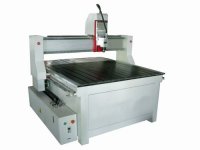I was just wondering about my old McDermott D22 cue.
It supposed to be a fully spliced cue, but a closer investigation showed me this :
http://www.kendocues.com/Websted/Pictures/Sider/Xray_of_shaft_&_Cue.html
The cue is the bottom one in the picture Butt_forarm_A_join and in Butt_forarm_A_join2.
The strange thing is that there is a bolt, in the middle of the splice, which I simply have no idea how they managed to put there???
What would you call this ?
A modern CNC inlayed cue is the other compared cue which has the usual A joint section and a bolt.
Speaking about CNC; I read about Mr. T.Wayne the other day and he is as I understand it a expert in CNC.
He makes his own equipment and do some fancy work (I have not seen to much of his work).
However it seems like his cues are placed in the "high end" marked (don't know the prices),
so I can't see that the impact of CNC has damaged his reputation.... ?
I have read C.Hightowers book and his view on CNC was pretty interesting;
When he started using a pantograph, those who still sat 10 hours with a stiletto knife to make a inlay,
felt he was crossing the line by using this machine and was not proper enough (If I remember correct).
Now we think CNC inlays are not "proper" because there is a machine which does this,
even if it's done with more accuracy and more intricate options,
which again would make the old school man work for day's to do the same.
For me, this would be tied down to; Do you manually sit with a knife and hand make the inlay/pockets?
If not, you are using machines which should make no big difference.
A Pantograph is copying a inlay/pattern most likely made from a machine shop (possibly by CNC)
which you reproduce with a small milling machine.
This is a "cheap mans CNC" and is this considered handwork?
If not I think we have many cues out there which is not "hand made" ..
So to appreciate something which is priced to $1000 -10 000 should this be made with a small knife ?
This is not always the case, many use Pantographs and for those who can afford, use CNC.
So I think it boils down to the quality of the wood, design and intricacy.
Saying that a CNC inlayed cue is not "worth" a "custom cue" name,
is not handwork, refusing to buy something like this, is for me a no go.
What makes a custom cue distinct is the builders knowledge of construction techniques,
material combinations and know how.
The ideas on how to make something which satisfies the customers needs in playability,
quality and craftsmanship is for me what a custom cue is all about.
The inlays is just eye candy which I take as a bonus and do not bother me to bad sleep at nights.
I don't car if he used a circle saw, band saw or a "knife and fork".
If I had a PC which could make a pocket+inlay exactly looking the same every 7 days a week,
what would be different if I used a Pantograph (with a machined template) and produced the same pocket + inlay?
Nothing, except that using a pantograph might not make me able to produce the same amount of inlays.
If I was using a knife,file,sandpaper and other tools, I might do the same inlay,
but most likely produce much fewer of these and possibly have small variations in the produced inlay.
For this to work I would need to charge much more money for the inlay / work because I can't produce the same amount of products.
I would most likely get a "tennis elbow", bad neck and a bad tamper when a customers thinks the inlays don't look right to.
We are basically paying for the amount of time involved in the production, which again is depending on the tools used.
If the fully spliced cues could be done in a CNC machine, why should that be of less quality then one produced using a circle saw/band saw?
Branding is an old art. I have been driving expensive Italian sports cars, which had "hand stitched" leather seats and all the bells and whistles which costed a truck load of money.
Of course this car needs to be expensive, since the production costs is much higher.
But the quality of the car was not that much better than other "normal" cars, according to the owner.
The bottom line is; This is like discussing religion - everybody has one and they all claims their own is their best. (I'm not any extreme religious person by no means).
Personally I would be interested in paying high prizes for a old school cue, but this is due to the limited amount of these,
special designs and historical value. Not because some one was willing to sit flat out 10 hours hand making inlays.
CNC would be around and I bet you anything that many who use old school saw,
knife and files is considering CNC to save them self for "tennis elbows",
neck pains and other fun stuff after many years in the business.
I know tradition is a part of the equation, and for those who would like to pay for this should do it.
Hey, why don't we all start using horses and park our car's,
skip the food shop and grow all our food our self ?
N
